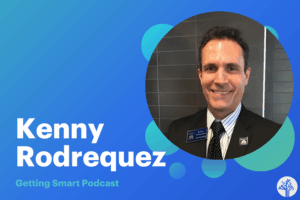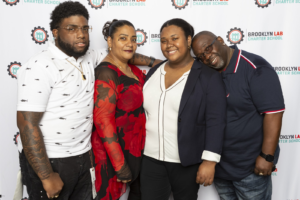How a Focus on School Culture Can Save the Teaching Profession

By: Dr. Arun Ramanathan
By now, most of us have become familiar with the teacher shortage that is encumbering American public schools. Last year every state in the nation reported an inadequate supply of teachers in at least one subject, according to an analysis by Education Week. A more recent study by the Economic Policy Institute concluded that the shortage is even worse than we thought, and commitments to boost teacher recruitment efforts or diversify the teaching workforce fail to answer a key question:
Why are teachers leaving in droves and how do we inspire them to stay?
If you ask teachers, a common theme emerges—culture. Teachers feel suffocated yet neglected, overwhelmed yet understimulated. Professional development is generic and compliance-oriented when it should be job-embedded and empowering. Is it any wonder that so many teachers are seeking out other professional paths?
A pilot program that Pivot leads in Monterey, California offers a roadmap for keeping teachers engaged. In essence, we measured culture and then systematically explored strategies to improve it. The results of the program, documented in our new report, show that an intentionally designed culture focused on the genuine development of its professionals—a growth culture—can provide exactly the kind of job-embedded experience that the teaching profession needs.
Repairing Damaged Relationships
In their groundbreaking 2016 book An Everyone Culture: Becoming a Deliberately Developmental Organization, Harvard Graduate School of Education researchers Dr. Robert Kegan and Dr. Lisa Lahey showed how numerous successful companies had built strong internal cultures with three key ingredients: Home—a sense of community and trust; Edge—the challenge, development, and growth every employee needs to succeed; and Groove—the everyday practices, rituals, systems, and routines baked into the life of an organization.
Could these same ingredients be used to deepen engagement and commitment among teachers, administrators and staff? When we were approached to help redesign the culture within Monterey Peninsula Unified School District (MPUSD), we decided to find out.
In MPUSD, there is a great need for high-quality, supportive schools: 70% of students qualify for free and reduced-price lunch, 30% are English learners, and one out of every ten is experiencing homelessness or housing insecurity. Last year, student performance in the district was 36.5 points below the state standard for reading and 70.5 points below for math, and 11.6% of students were chronically absent. And, like many high poverty districts across the country, MPUSD has been through a painful carousel of leadership change.
When current Superintendent PK Diffenbaugh arrived in 2014, he was the seventh superintendent in ten years. As he put it, that constant leadership churn had “damaged relationships and ruined trust inside the district.” The district had a culture problem. Diffenbaugh was determined to address it and invited us to help him.
Starting with Growth Culture
We began by adopting the Growth Culture Indicator (GCI), a survey of 28 questions that measure the prevalence of those three key ingredients (home, edge and groove) – making MPUSD the first school district in the nation to provide the GCI survey to all employees. Not surprisingly, the survey found that the district’s teachers, principals and staff were hungry for more opportunities to grow, and for the trust and collaboration necessary for that development.
The results also showed one school that was clearly outpacing the others. Monte Vista Elementary staff rated their current edge state higher than most schools ranked their aspirational state, and boasted better academic results than comparable schools. The school’s principal, Joe Ashby, practiced a leadership approach that was aligned with growth culture principles.
For example, Ashby established distributive leadership teams of various stakeholders that met regularly to evaluate and make action-oriented decisions around culture, instruction, data, student learning, and more and then share their process and decisions with the whole school community, including students and families. Ashby also implemented consistent professional learning communities and staff development that focused on improving instruction, positive behavioral interventions and supports (PBIS), and community engagement. Ashby was building a culture within his school where it was safe for both adults and students to take the kinds of risks and make the kinds of mistakes that lead to powerful growth.
Working on Cultivating Trust and Encouraging Vulnerability
Drawing upon the GCI survey results, Pivot worked closely with five teams of educators and staff from four schools and one district department, to develop a growth culture. While each team had its own priorities, a common theme was self-improvement—increased coworker and supervisor investment in job-embedded professional development, and training in how to give and receive constructive feedback.
Our first sessions were designed to build a sense of community and trust (home) by helping to cultivate a shared understanding of vulnerability and authenticity and identifying barriers to the expression of those values. The following sessions focused on improving edge by offering strategies for having difficult conversations, giving and receiving feedback, and setting personal and professional goals tied to individual and school improvement. Finally, we positioned the teams to move toward implementation, or groove, by facilitating the development of specific, daily, job-embedded practices to implement with their staff back at their sites.
Fifteen months after the pilot began, we conducted another survey to measure the impact of our efforts. Across the district, we saw improvement in employees’ perception of culture and a shrinking gap between experience and aspiration.
One team experienced a remarkable 61% culture improvement between the first and second surveys. They said the program helped them have more deliberate and open conversations that addressed a wider range of issues and challenges, and that the planning and facilitation of their team meetings became much more collaborative. One team member said that people in the department “no longer saw mistakes as the end of the world but rather a chance to learn and improve together.”
Superintendent Diffenbaugh plans to continue supporting the pilot group and is considering a second phase of the growth culture pilot with a different cohort. Ashby, the principal who had already been implementing growth culture, further developed his practices during the pilot. “It was one of the most impactful professional development programs of my whole 25-year career,” he told the Monterey Herald.
Healthier Adult Culture Means More Successful Students
Our results suggest that any district or school seeking to develop and maintain a strong and committed workforce would be wise to prioritize culture improvement, noting that creating a healthy adult culture can also produce significant gains in student achievement. In fact, researchers have argued that efforts to improve teacher effectiveness as a vehicle for increasing student achievement have overshadowed the importance of improving school culture and teacher job satisfaction as a means to the same end. There is also significant research that shows a strong connection between student and adult learning.
Those who are determined to improve the quality of public education would benefit from recognizing the tremendous potential of focusing on culture. Culture work is a path to support and grow the adults who are responsible for transforming our schools. Of course, there is no single program or step-by-step recipe that can solve the complex educational challenges faced by many schools. However, if there is one lever that has the potential to be the most transformational, a focus on culture with an adult development lens might just be it.
For a deeper look at growth culture and a more in-depth account of the pilot in Monterey Peninsula Unified, please read Pivot Learning’s report, “Growth Culture: A New Approach to School Improvement.”
For more, see:
- The Intellectual Hunger of Teachers
- Getting Clearer: Educator Movements
- The Importance of Teacher Voice
Stay in-the-know with innovations in learning by signing up for the weekly Smart Update.
Dr. Arun Ramanathan is the CEO of Pivot Learning, an Oakland, California based nonprofit that annually works with over 100 high-need school districts in 16 states.







0 Comments
Leave a Comment
Your email address will not be published. All fields are required.